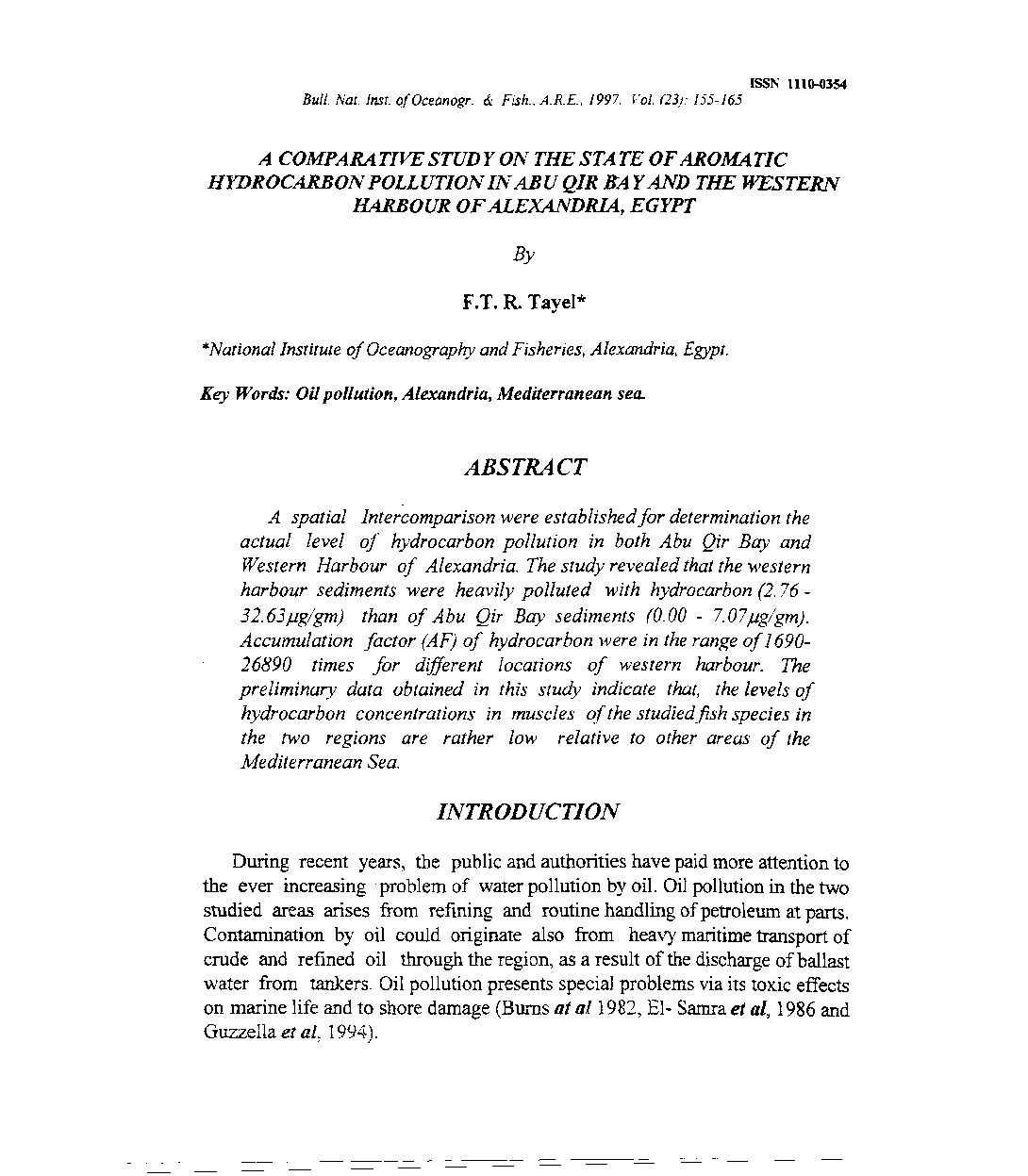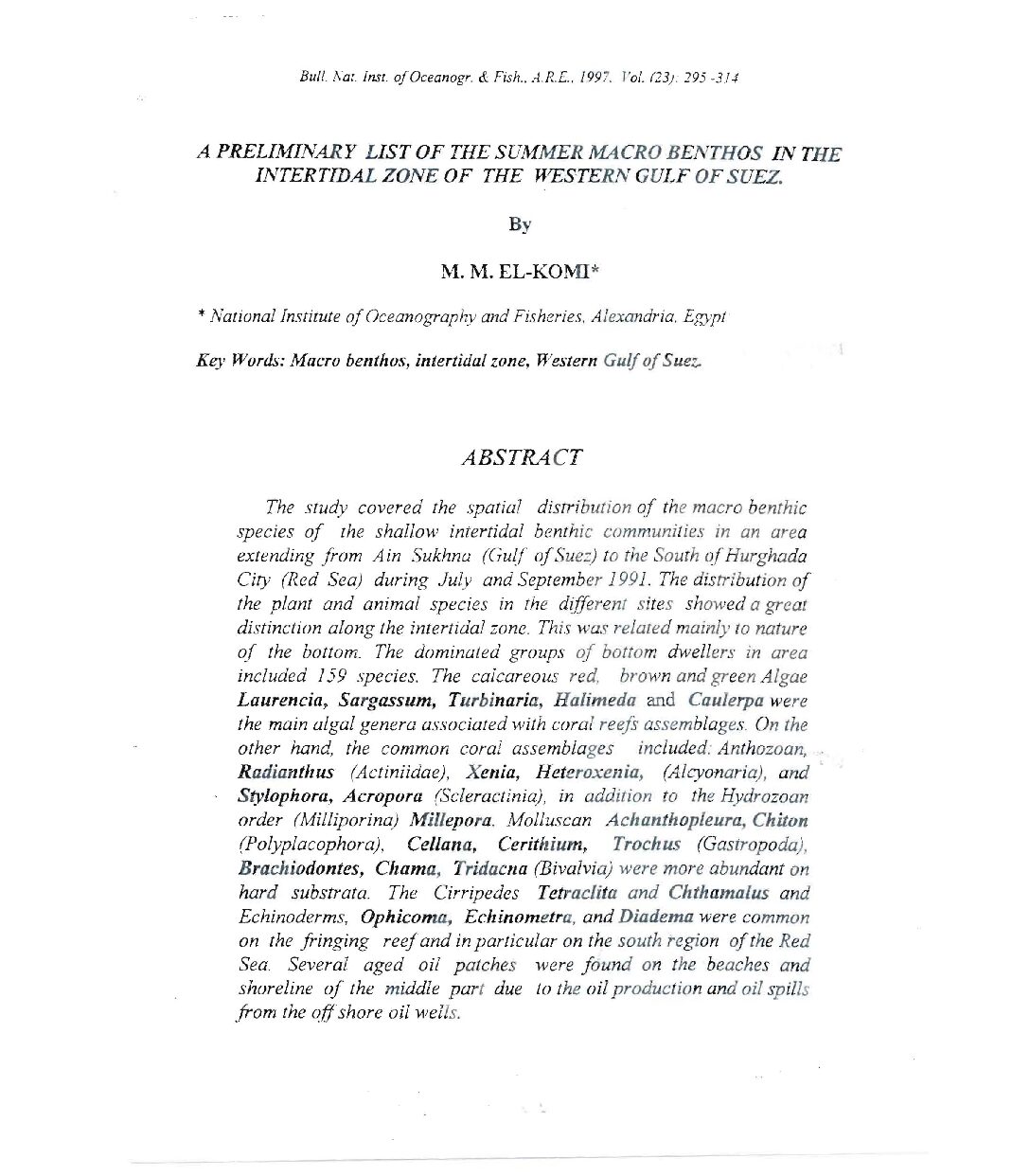Categories
vol-23PETROLOGICAL- STATISTICAL APPROACH FOR DIFFERENTIATION
AND IDENTIFICATION OF FLUVIO-MARINE ENVIRONMENTS
IN THE MLE DELTA, EGYPT
By
E. M. DEGHEDY; O. E. FRIHY; M. A. EL ASKARY
AND W. M. MOUFADDAL
*National Institute ojOceanograph.y & Fisheries, Alexandria, Egypt.
Key Words: Petrology, f<1uvio-marine environments, Nile Delta.
ABSTRACT
Textural and coarse jractivn compositional components are evaluated to
distinguish samples from mod~rn environments ofthe ~Nile delta ofEgypt. These
environments include: river, coastal dune, accretion ridges, beach, nearshore,
lagoon and prodelta. In this study petrologic variables (12 textural and 18
mineralogical, faunal and floral) were considered for each sample.
Discrimination was achieved by using simple bar graph ofthe raw data for each
environment and Q-mode factor analysis. The factor analysis yielded four
compositional assemblages: Factor 1 is dominated by terrigenous fine sand.
factor 2 consists of biogenic mud, factor 3 contains terrigenous coarse and
medium sands andfactor 4 comprises composite silty sand. Discrimination ofthe
seven environments is generally good but less in beach, coastal dune and river
sands.
Having discriminating the examined environments using Q-mode factor
analysis, a graphical model was constructed to determine the origin of
"unknown" samples. As a test, this model is satisfactory to identify and interpret
the origin of sediments ofHolocene age from two additional cores recovered off
the delta coast.







